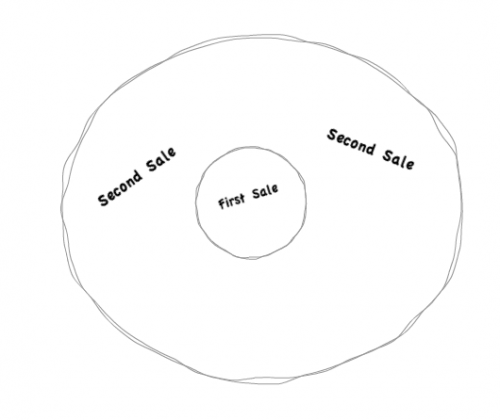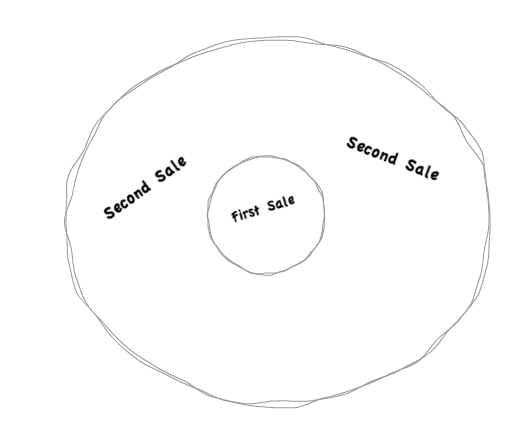Most of us are familiar with the first sale. It’s the one we’re focused on. It’s selling your software to the head of IT. It’s selling the new HR application to HR. It’s the your printing services to the head of the art department. The first sale is selling your product or service to the person who’s going to use it. Most sales training and information sets us up pretty good for the first sale. I’m guilty of it here. There have been a zillion posts on this blog about the first sale. The first sale is why the product was developed. The first sale was who the product was developed for. The first sale is for the person or persons who are going to use the product. The first sale is simple — compared to the second sale.
The second sale isn’t so simple. There is no clear path to understanding the second sale. The second sale looks different almost every time. The one consistent element to the second sale is that it is NOT to the person or persons who are going to use it. The second sale is the process of selling to the folks who will never actually use the product. They rarely experience the benefit or value from the product or service, yet they play role in the decision. The second sale targets those who may be impacted by the decision. It could be supply chain who needs to change their supply chain process if the company switched to your parts. It’s IT who is concerned about the security of your new SaaS application. It’s finance doesn’t want to support more operating expense and won’t provide capital budget. It’s HR who is concerned about the legal implications. It’s somebody who is afraid their world will be affected and they don’t won’t to deal with the change. I think you’re getting it. You’ve experienced the second sale before. It’s not easy.
Often the second sale is like selling to children who say; “Why would I want to do that, what do I get out of it?” It ain’t easy.

Selling in the second sale takes patience. It takes internal support from your buyer. It requires a clear understanding of what the fear motive is and it requires the ability to uncover secondary benefits for the second sale stakeholders. In most cases, second sale stakeholders are operating from fear. They only see the downside. Remember, the product wasn’t built for them. There is little gain for them. In their eyes it’s lose, lose. Start by being open. Provide as much information as possible. Be an open book. Folks in the second sale are already uneasy. If they feel information is being withheld or if they are being pressured, they will try to shut things down asap. Look for secondary benefits that may benefit them. Are there ways to bring more value than recognized? If IT is concerned about SaaS security, acknowledge their concern, determine what they would need to feel safe and provide it if you can, but also emphasize the cost savings and operational benefits of SaaS as well. Draft a white paper outlining the costs of managing and hosting the application on premise. The cost just may outweigh their security concerns.
The second sale takes creativity and patience. Most importantly, it takes awareness and tact. Don’t go into the sale without knowing what the second sale is going to look like. Be clear on who your product affects besides your buyer. Know who has veto power that sees little benefit from what you’re selling. Understand the environment your selling in. Build your strategy with the second sale in mind. Make sure the second sale is built into the sales process. Know the affect of the second sale on the overall sale.
The second sale is a hairy monster. I’ve seen sales processes where the second sale is longer and more cumbersome than the primary sale. There is nothing more frustrating than when your buyer desperately wants what you’re selling. They say “yes” let’s do this and then say, I need to run it past HR, Marketing, IT, Finance. When this happens, know you have just passed into the ring of the second sale. Strap on your seat belt, have some patience and be prepared. The real work is about to begin.


